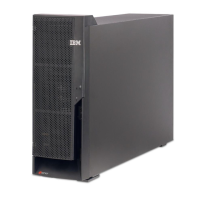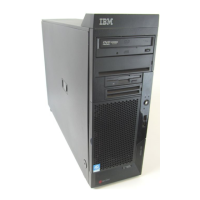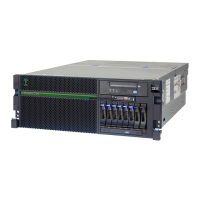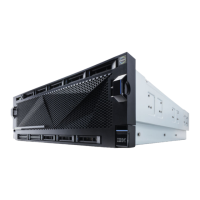Workload, capacity, and performance 57
Draft Document for Review October 18, 2004 5486wrkperf.fm
WebSphere Host Access Transformation Server (HATS Studio): Part of Host
Access Client Package for iSeries (5733-A78)
WebSphere Host Access Transformation Server Limited Edition (HATS LE):
Part of iSeries Access Family (5722-XW1)
The unique requirements of the customer application determine the best solution
for a customer environment. You can find a comparison of functions for many of
the IBM products on the Web at:
http://www-1.ibm.com/servers/eserver/iseries/access/web/
web_to_host_comparisons.html
IBM WebFacing Tool
The IBM WebFacing Tool provided in the IBM WebSphere Development Studio
for iSeries creates a Web-ready GUI to 5250 applications. The applications can
then be made available in a familiar GUI format recognized by any Web user to
anyone with a browser.
To create the interface, the IBM WebFacing Tool works from Data Description
Specification (DDS) display files and User Interface Manager (UIM) help files.
The interface which is generated consists of Java Servlets, JavaServer Pages
(JSPs), JavaBeans, and JavaScript. The interface runs under WebSphere -
Express for iSeries, WebSphere Application Server V5, or WebSphere
Application Server V4. These WebFaced applications do not require 5250 CPW
capacity when run on the Model 520, 550, 570, 595, 800, 810, 825, 870, or 890.
Applications that are Web-enabled using the IBM WebFacing Tool generally
perform better than applications refaced with other tools. Most other tools convert
the 5250 data stream to a Web interface in a run-time conversion. This impacts
the execution performance of these refaced applications.
With the IBM WebFacing Tool, the Web interface is created at development time.
During application execution, the data from the application is redirected to the
Web interface created by the IBM WebFacing Tool. No 5250 data stream is
created and there is no run-time conversion. This up-front resource investment
pays off with more efficient production operations.
The 5250 data stream and 5250 OLTP are efficient and have been fine-tuned
over many years. 5250 applications running with the GUI take significantly more
CPU resource than if they run with the original green-screen interface under a
5250 OLTP environment. The magnitude of the increase in resource depends
upon the application. The larger the percentage of time is spent doing screen I/O
in a 5250 application, the larger the CPW increases when running with a GUI.
Typically the application requires several times the processor resource.
